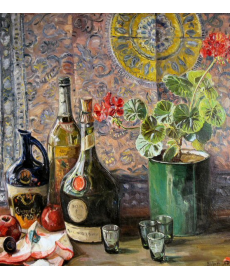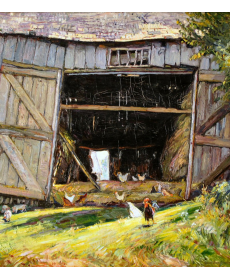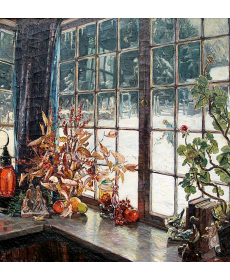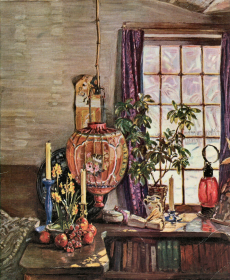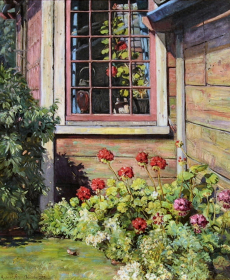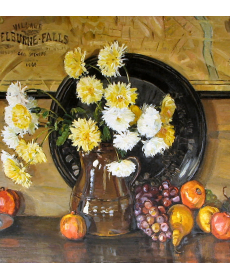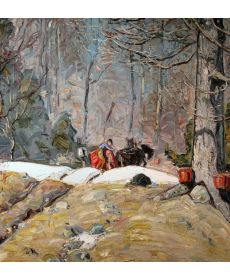The Hiram Woodward House and Studio

A view of the Hiram Woodward House (left) and Studio (right) looking toward the east.

The Hiram Woodward Studio (left) and house (right)
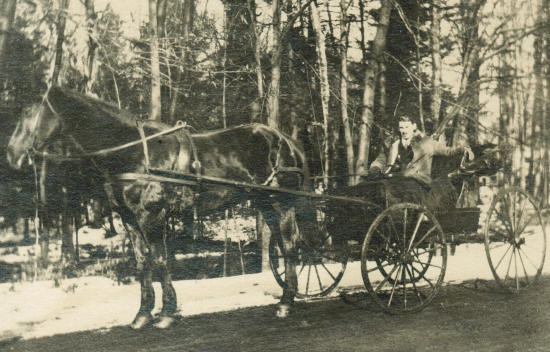
Robert Strong Woodward with his horse Thomas à Kempis and phaeton buggy.
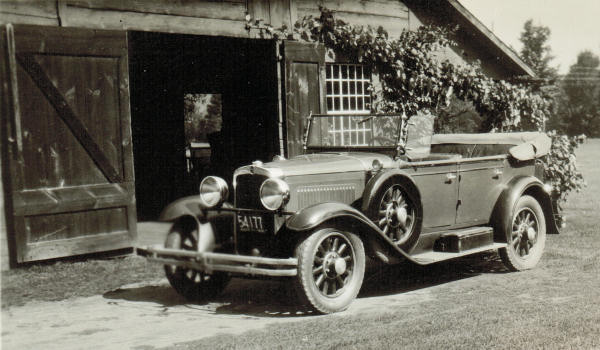
1929 Nash Advanced 6 at the back of the Hiram Woodward Studio.
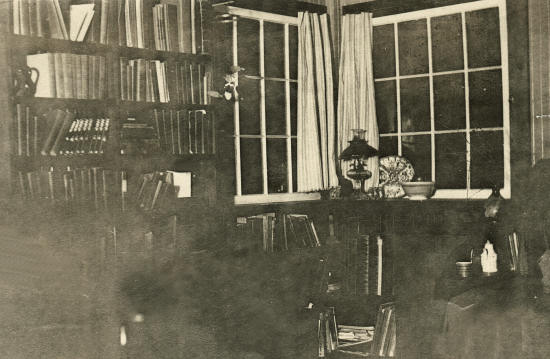
An interior view of the Hiram Woodward corner windows.
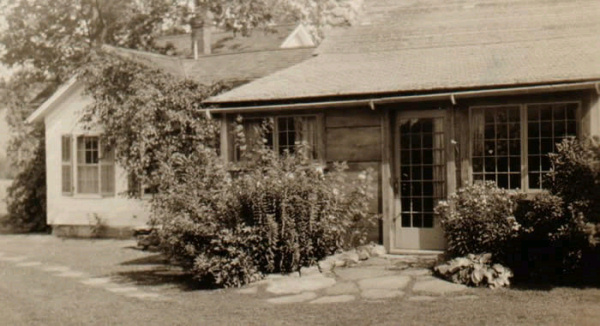
The entrance to Hiram Woodward Studio showing stone incline to ease entry for a wheelchair.
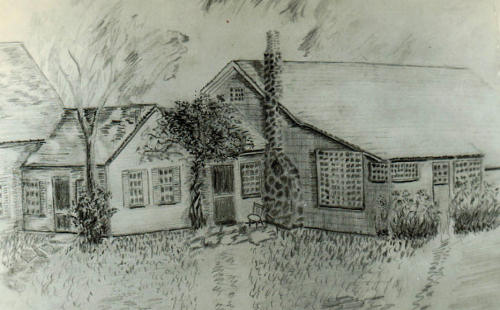
RSW made sketches of how he would like the renovated building to look.
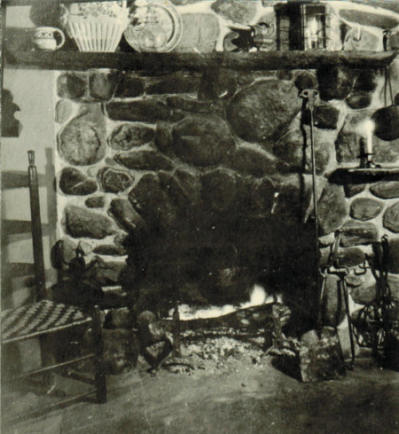
The stone fireplace at the Hiram Woodward Studio.
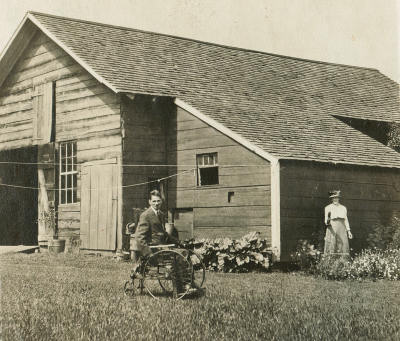
Robert Strong Woodward at the Hiram Woodward place.
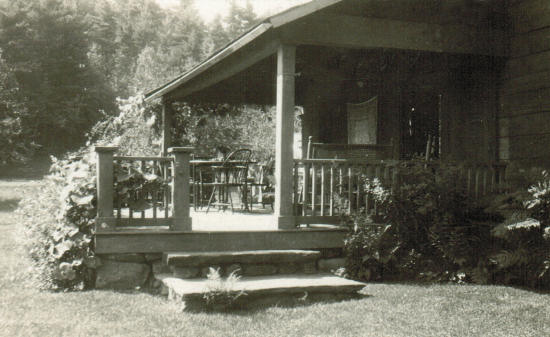
The porch of the Hiram Woodward Studio showing grapevines and stone steps.
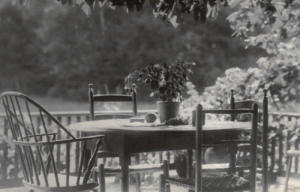
Table and chairs set up on the porch.
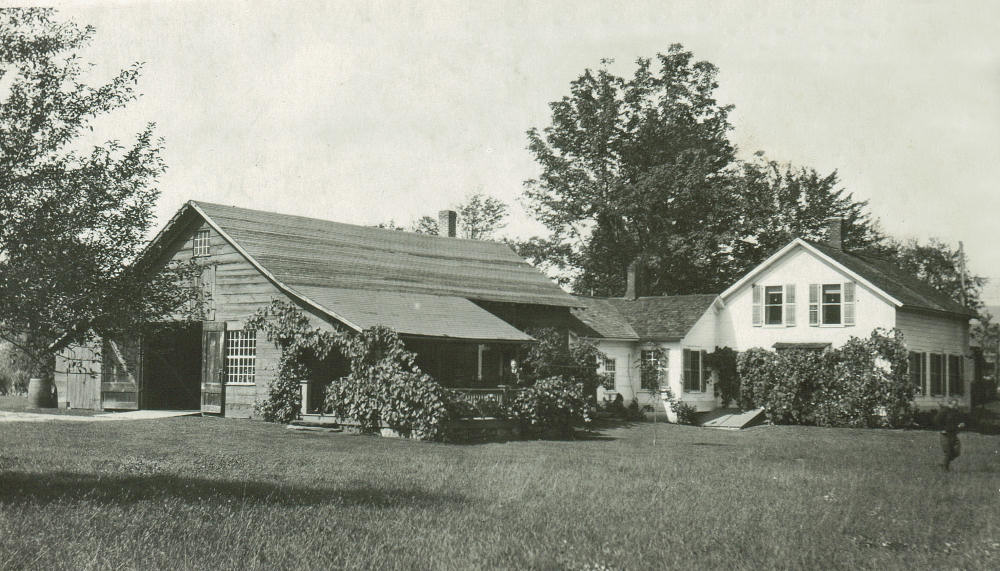
A rear view of the Hiram Woodward Studio (left) and House (right) looking toward the north. Robert Strong Woodward can be seen on the porch.
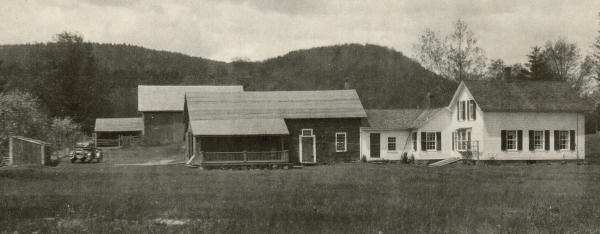
A west-looking view of RSW's second home and studio, with the barn in the background, left.
Note: Purinton Hill in the background also shown in the painting When The Sun Rides Low
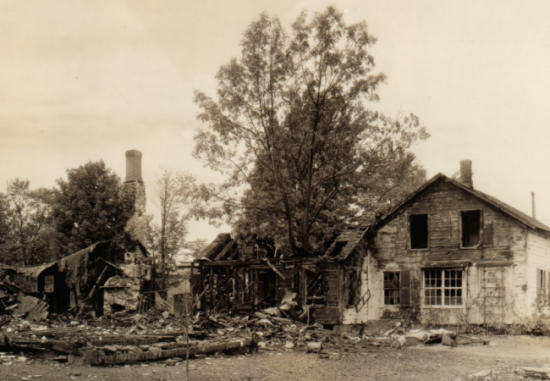
The Hiram Woodward place after the fire. (Photo courtesy Herbert Ashworth)

The red lantern
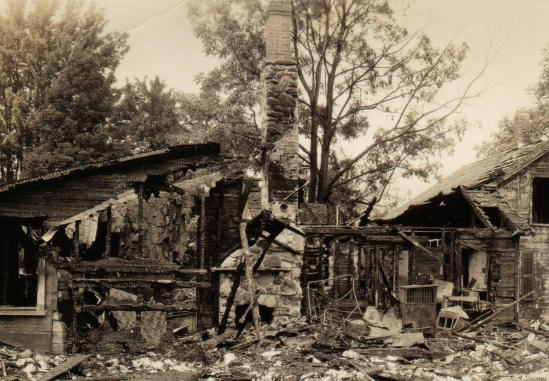
The Hiram Woodward place after the fire. (Photo courtesy Herbert Ashworth)
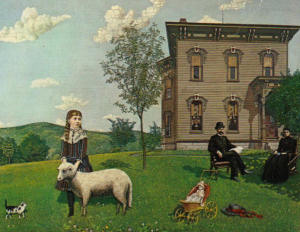
Mourning Picture by Edwin Elmer
The house in this painting was where RSW
lived for a short time after the fire.
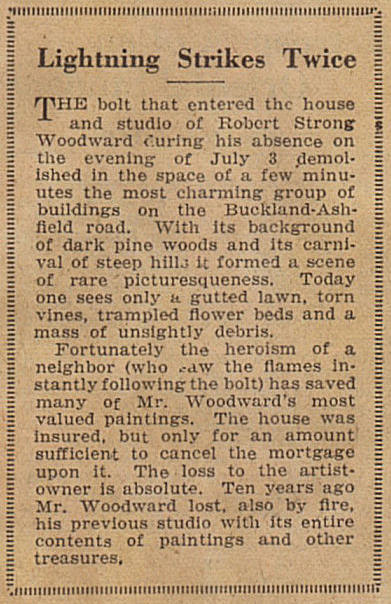
Boston Evening Transcript, July 14, 1934.
Lightning Strikes Twice
The bolt that entered the house and studio of Robert Strong Woodward during his absence on the evening of July 3 demolished in the space of a few minutes the most charming group of buildings on the Buckland-Ashfield road. With its background of dark pine woods and its carnival of steep hills it formed a scene of rare picturesqueness. Today one sees only a gutted lawn, torn vines, trampled flower beds and a mass of unsightly debris.
Fortunately the heroism of a neighbor (who saw the flames instantly following the bolt) has saved many of Mr. Woodward's most valued paintings. The house was insured, but only for an amount sufficient to cancel the mortgage upon it. The loss to the artist-owner is absolute. Ten years ago Mr. Woodward lost, also by fire, his previous studio with its entire contents of paintings and other treasures.
The bolt that entered the house and studio of Robert Strong Woodward during his absence on the evening of July 3 demolished in the space of a few minutes the most charming group of buildings on the Buckland-Ashfield road. With its background of dark pine woods and its carnival of steep hills it formed a scene of rare picturesqueness. Today one sees only a gutted lawn, torn vines, trampled flower beds and a mass of unsightly debris.
Fortunately the heroism of a neighbor (who saw the flames instantly following the bolt) has saved many of Mr. Woodward's most valued paintings. The house was insured, but only for an amount sufficient to cancel the mortgage upon it. The loss to the artist-owner is absolute. Ten years ago Mr. Woodward lost, also by fire, his previous studio with its entire contents of paintings and other treasures.
Boston Evening Transcript, July 14, 1934.
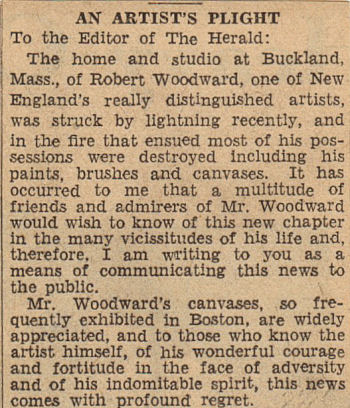
Boston Herald, August 9, 1934.
AN ARTIST'S PLIGHT
To the Editor of The Herald:
The home and studio at Buckland, Mass., of Robert Woodward, one of New England's really distinguished artists, was struck by lightning recently, and in the fire that ensued most of his possessions were destroyed including his paints, brushes and canvases. It has occurred to me that a multitude of friends and admirers of Mr. Woodward would wish to know of this new chapter in the many vicissitudes of his life and, therefore, I am writing to you as a means of communicating this news to the public.
Mr. Woodward's canvases, so frequently exhibited in Boston, are widely appreciated, and to those who know the artist himself, of his wonderful courage and fortitude in the face of adversity and of his indomitable spirit, this news comes with profound regret.
To the Editor of The Herald:
The home and studio at Buckland, Mass., of Robert Woodward, one of New England's really distinguished artists, was struck by lightning recently, and in the fire that ensued most of his possessions were destroyed including his paints, brushes and canvases. It has occurred to me that a multitude of friends and admirers of Mr. Woodward would wish to know of this new chapter in the many vicissitudes of his life and, therefore, I am writing to you as a means of communicating this news to the public.
Mr. Woodward's canvases, so frequently exhibited in Boston, are widely appreciated, and to those who know the artist himself, of his wonderful courage and fortitude in the face of adversity and of his indomitable spirit, this news comes with profound regret.
Boston Herald, August 9, 1934

North Adams Transcript, July 5, 1934.
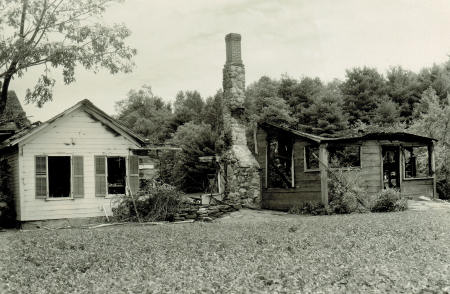
Hiram Woodward Studio Fire 1934.
ARTIST'S STUDIO
GUTTED BY FIRE
Lightning Bolt Strikes
Buckland Residence
$8,000 LOSS
Valuable Paintings and Furniture Owned by Robert S. Woodward Are Saved.
During a terrific electric storm which swept Shelburne Falls and Buckland Tuesday evening, lightning struck the studio and home of Robert Strong Woodward, famous Buckand artist, and the resulting blaze practically destroyed the building. Most of the contents of the building, including about 25 of Mr. Woodward's valuable paintings, were saved. The loss is estimated at between $7,000 and $8000 which is covered by insurance. There was no one in the house at the time the bolt struck it, Mr. Woodward and his chauffeur having left about a half hour before to attend the theater in Greenfield.
Abner Gould, who lives across the. highway from the Woodward studio, heard a sharp roll of thunder after the lightning bolt had struck the house and looking across the road saw what he described "a blanket of fire" about midway between the building.
The storm had put telephone lines in that section out of commission although Mr. Gould visited several homes in an attempt to find a telephone in operation. Robert Haeberle rushed to Shelburne Falls to notify the fire department there while Mr. Gould and others started the work of removing the contents of the blazing building. Nearly 20 minutes after the start of the fire, the local department received word of it. Five men and the department truck were sent to the scene, which is out of the fire district.
The fire evidently followed the lighting system for flames burst out wherever there were lighting connections. The local department laid three lines of hose from a nearby pond, using the truck's pumper, but the blaze had gained such headway that little could be done to check it. A line of hose was played near a tank containing 300 gallons of kerosene in order to prevent an explosion.
Most or the furniture and furnishings were saved in addition to the valuable canvasses. Many curios and antiques gathered by Mr. Woodward were lost, however.
The building was a story and a half New England cottage to which an ell had been built which served as the studio. The structure was a most attractive one and a familiar sight along the Buckland-Ashfield highway.
Mr. Woodward was located in Greenfield and returned to the scene of the fire. The full loss had not been determined by him today due to the large number of articles contained in the building.
The heating plant of the house was not affected by the blaze, as the firemen played a line of hose around it. The studio was demolished while walls of the main part of the house, although standing, were badly damaged.
The fire department was again called about 2:15 o'clock yesterday afternoon as the smouldering debris in the cellar was fanned by the wind and threatened to do further damage.
Mr. Woodward is fortunate in having secured the attractive summer home Mr. and Mrs. C. E. Buell on Ashfield Street for a temporary home and he and his attendants have already settled there.
During the storm in Shelburne Falls, many branches from trees were broken down and lawns were covered with leaves and small branches. On Main Street a large branch from a maple tree near the home of Stanley W. Cummings blew onto the Frost house occupied by Mr. and Mrs. S. A. Bandeira and Mrs. Bertha Hall and her daughter doing some damage to the chimney and roof. On Bridge Street the telephone wires were broken down by falling branches and the service in that section was crippled for a time.
Some relief from the extreme heat of the past few days followed the shower.
GUTTED BY FIRE
Lightning Bolt Strikes
Buckland Residence
$8,000 LOSS
Valuable Paintings and Furniture Owned by Robert S. Woodward Are Saved.
During a terrific electric storm which swept Shelburne Falls and Buckland Tuesday evening, lightning struck the studio and home of Robert Strong Woodward, famous Buckand artist, and the resulting blaze practically destroyed the building. Most of the contents of the building, including about 25 of Mr. Woodward's valuable paintings, were saved. The loss is estimated at between $7,000 and $8000 which is covered by insurance. There was no one in the house at the time the bolt struck it, Mr. Woodward and his chauffeur having left about a half hour before to attend the theater in Greenfield.
Abner Gould, who lives across the. highway from the Woodward studio, heard a sharp roll of thunder after the lightning bolt had struck the house and looking across the road saw what he described "a blanket of fire" about midway between the building.
The storm had put telephone lines in that section out of commission although Mr. Gould visited several homes in an attempt to find a telephone in operation. Robert Haeberle rushed to Shelburne Falls to notify the fire department there while Mr. Gould and others started the work of removing the contents of the blazing building. Nearly 20 minutes after the start of the fire, the local department received word of it. Five men and the department truck were sent to the scene, which is out of the fire district.
The fire evidently followed the lighting system for flames burst out wherever there were lighting connections. The local department laid three lines of hose from a nearby pond, using the truck's pumper, but the blaze had gained such headway that little could be done to check it. A line of hose was played near a tank containing 300 gallons of kerosene in order to prevent an explosion.
Most or the furniture and furnishings were saved in addition to the valuable canvasses. Many curios and antiques gathered by Mr. Woodward were lost, however.
The building was a story and a half New England cottage to which an ell had been built which served as the studio. The structure was a most attractive one and a familiar sight along the Buckland-Ashfield highway.
Mr. Woodward was located in Greenfield and returned to the scene of the fire. The full loss had not been determined by him today due to the large number of articles contained in the building.
The heating plant of the house was not affected by the blaze, as the firemen played a line of hose around it. The studio was demolished while walls of the main part of the house, although standing, were badly damaged.
The fire department was again called about 2:15 o'clock yesterday afternoon as the smouldering debris in the cellar was fanned by the wind and threatened to do further damage.
Mr. Woodward is fortunate in having secured the attractive summer home Mr. and Mrs. C. E. Buell on Ashfield Street for a temporary home and he and his attendants have already settled there.
During the storm in Shelburne Falls, many branches from trees were broken down and lawns were covered with leaves and small branches. On Main Street a large branch from a maple tree near the home of Stanley W. Cummings blew onto the Frost house occupied by Mr. and Mrs. S. A. Bandeira and Mrs. Bertha Hall and her daughter doing some damage to the chimney and roof. On Bridge Street the telephone wires were broken down by falling branches and the service in that section was crippled for a time.
Some relief from the extreme heat of the past few days followed the shower.
North Adams Transcript, July 5, 1934

The Hiram Woodward barn.
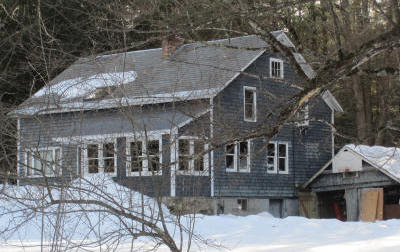
The Hiram Woodward barn has been converted into a house.

The appearance today of the site of the Hiram Woodward Studio and home.
JGN
2007
LMP
2013


